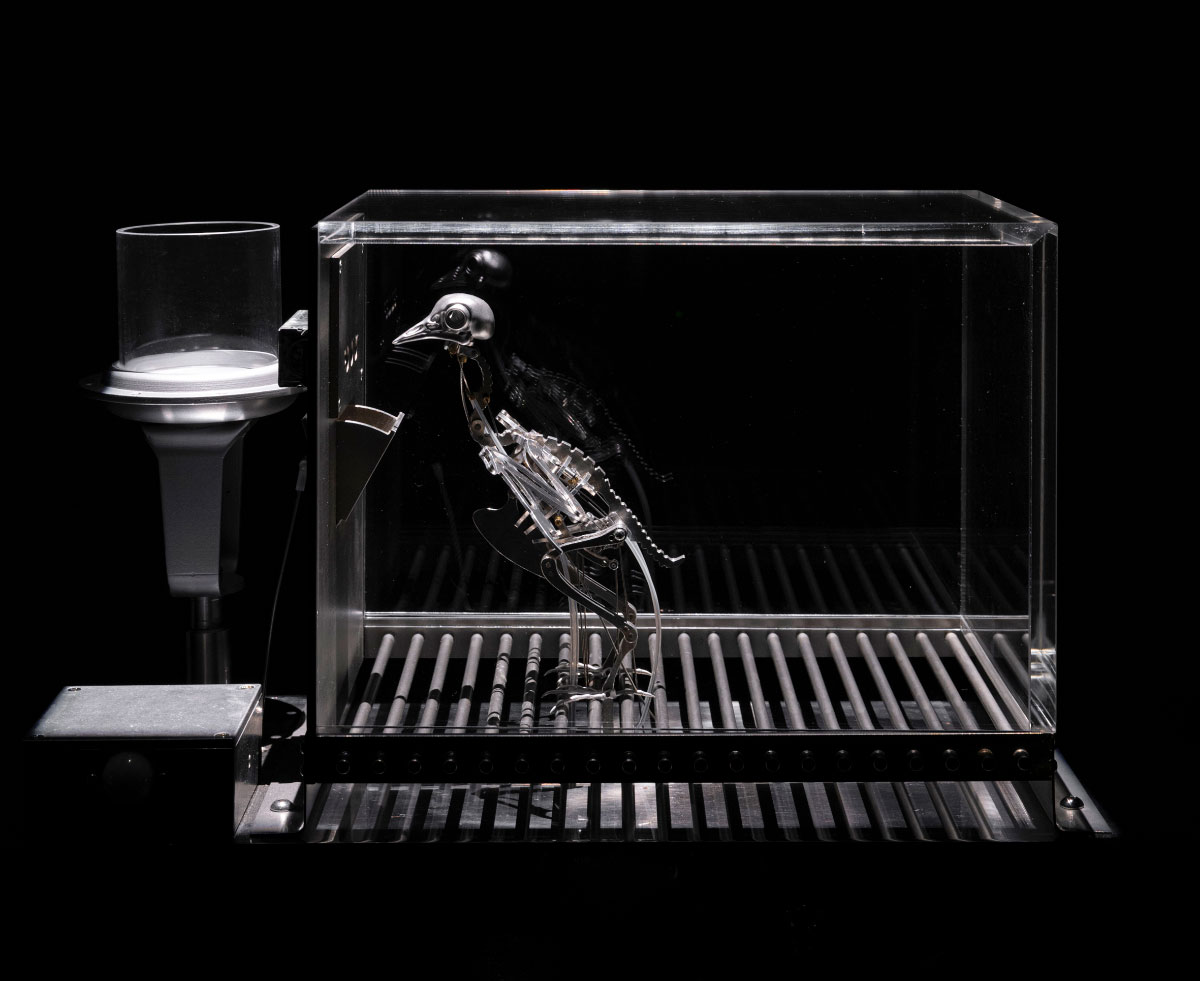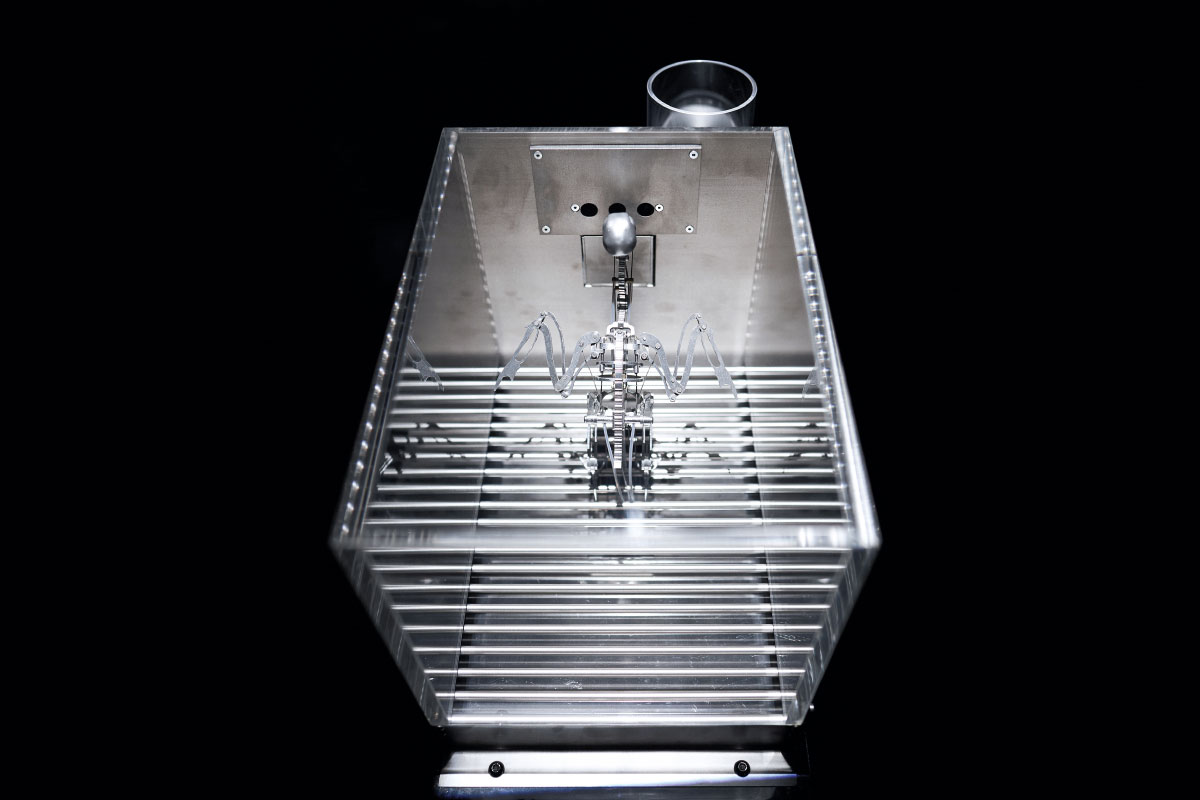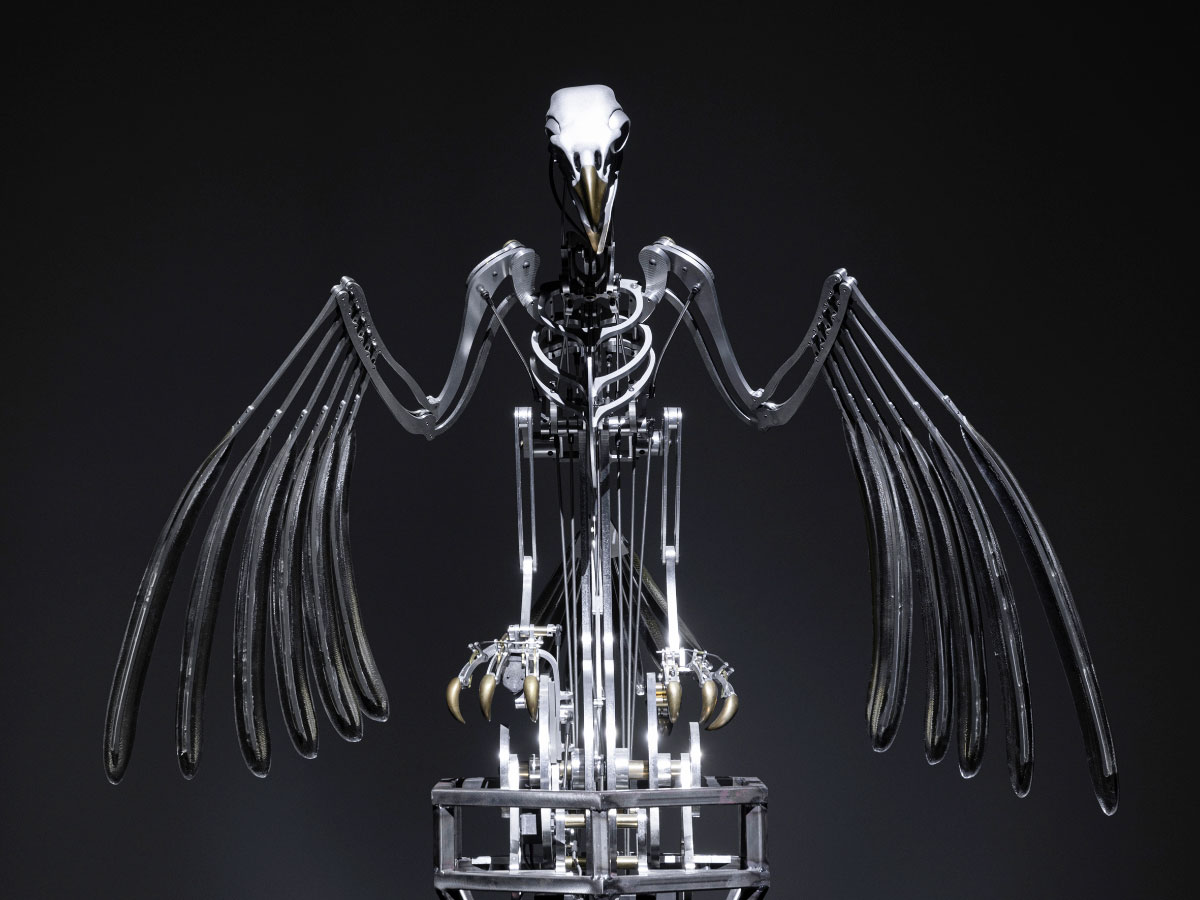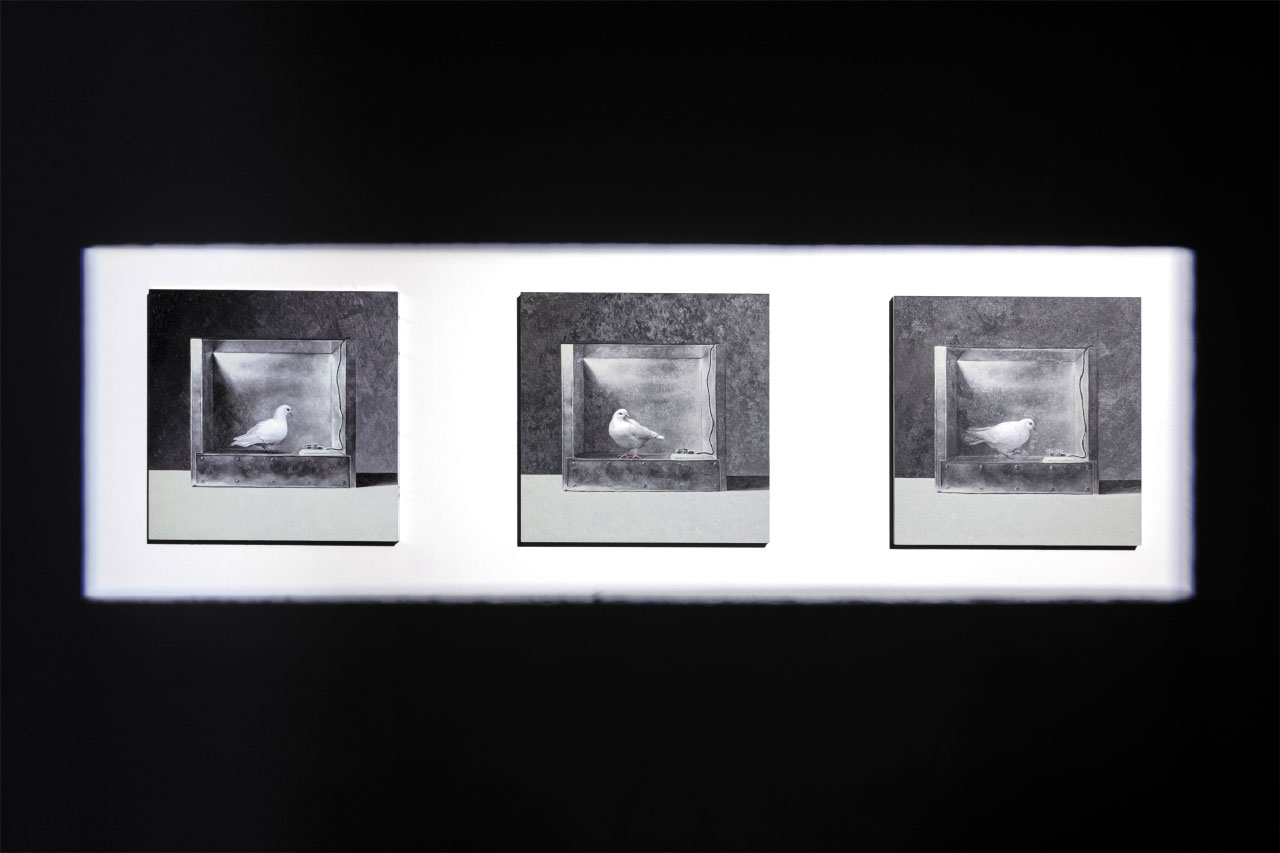ART CITIES: Dubai-Mat Collishaw
 An important member of the Young British Artists, Mat Collishaw creates works that confronts issues of moral ambiguity with formally stunning and alluring imagery. Coupling references to art history, literature and the Victorian era with modern imaging technology, the artist renders powerful images and objects that often re-contextualize the impact of traditionally disturbing and sinister subject matter. At once poetic and morbid, his sculptures, installations and photo-based works expose elements of beauty within the darkest fantasies, blurring the lines between seduction and repulsion, observation and exploitation, reality and artifice.
An important member of the Young British Artists, Mat Collishaw creates works that confronts issues of moral ambiguity with formally stunning and alluring imagery. Coupling references to art history, literature and the Victorian era with modern imaging technology, the artist renders powerful images and objects that often re-contextualize the impact of traditionally disturbing and sinister subject matter. At once poetic and morbid, his sculptures, installations and photo-based works expose elements of beauty within the darkest fantasies, blurring the lines between seduction and repulsion, observation and exploitation, reality and artifice.
By Efi Michalarou
Photo: Gary Tatintsian Gallery Archive
Mat Collishaw’s works encourage us to think about fundamental questions of psychology, history, sociology and science. Behind the richness and visual appeal of each work there is a deep exploration of how we perceive and are influenced by the world today through images, and modern technology. Questions regarding behavioral manipulation, programming, temporal reality all linger in the viewing experience. Having presented Collishaw’s project “Albion” in Moscow in 2018, Gary Tatintsian Gallery is again hosting the artist in 2022 with the exhibition “The Machine Zone”. Machine zone is a term describing the state gamblers enter when they are fully immersed in a game and the outside world recedes. The term is used to describe the addictive phenomenon caused by variable rewards. Players, not knowing what card is coming next or when they will be rewarded, are compelled to keep returning to the table. This psychological insight is used by software designers, who incorporate the concept into the mechanics of social media platforms. “The Machine Zone” (2019) – for which the exhibition is named – is an installation of robotic birds that perform a repetitive algorithm of actions. The work refers to the 1950s experiments of the American psychologist Burrhus Frederic (B.F.) Skinner, in which he analyzed the behavior of small animals driven by a random reward system. Skinner’s basic methodology was to give his subjects a signal to encourage them to perform actions in exchange for a reward. Skinner’s conclusion, that our behavior is ‘a response to circumstances and environmental influences’, underlies much of the research on the algorithms that govern our social networking interactions today. Taking advantage of the vulnerability of the human psyche, algorithms shape our habits and create unconscious addictions. The series of paintings called “The Operant Conditioning Chamber” (2022) is based on photographs of Skinner’s early experiments. The birds shown there, confined in cages to study their behavior, became unwitting agents in collecting data that could then be used for manipulation and financial profit. The “Centrifugal Soul” (2016), a large-scale zoetrope, was created in collaboration with renowned contemporary evolutionary psychologist Geoffrey Miller. A zoetrope – an elegant structure invented during the Victorian era, references to which invariably appear in Collishaw’s works. In the center of the zoetrope is a platform adorned with models of flowers and birds. Rotating at 60 rpm, the platform is illuminated with flashes of strobe light every second, creating the illusion of movement as the birds hover over the opening buds and perform mating dances with their bright plumage. Birds are programmed by nature to perform these courtship rituals to breed and maintain the species. Technology companies have developed ways to capitalize on this natural instinct, encouraging us through social media and smartphones to constantly create and project an idealized version of ourselves, presenting ourselves to the outside world as more successful and desirable. “Nerve Rack” (2019) was originally created specifically for the former Ushaw Seminary in County Durham as a site-specific installation. A life-size mechanical figure of an eagle, it was installed in the chapel of St. Cuthbert’s Church opposite one of County Durham’s treasures, a lectern topped with a bronze sculpture of an eagle designed by the 19th century architect Augustus Pugin. The images embodied symbols of opposing spiritual beliefs in 16th century England. Facing each other, they represented the unity and, at the same time, the irreconcilable differences between the Catholic and Protestant movements of the era. Contrasting the minimalism of the machine with the elegance of the bronze sculpture, the artist reflects on the power of suggestion and the ways of distorting information through visual images. “Expiration Painting” (2016) is a series of paintings in Plexiglas frames that are reproductions of works by Old Masters, the subjects of which touch upon the transience of human life and its finitude. Collishaw actualizes this “eternal” theme through a modern presentation of classical images. The reproductions remain incomplete and resemble a sheet of paper with an image not fully printed out because the printer ran out of ink, forcing the viewer to think about the brevity of the moment even in the era of high-speed technology.
Photo: Mat Collishaw, The Centrifugal Soul, 2016, Acrylic, aluminium, steel, LED lights, motor, electronic circuitry, resin and paint, © Mat Collishaw, Courtesy of the Artist and Gary Tatintsian Gallery
Info: Tatintsian Gallery, Unit 50, Alserkal Avenue, Al Quoz, Dubai, United Arab Emirates, Duration: 27/9-3/11/2022, Days & Hours: Daily 11:00-19:00, https://tatintsian.com/




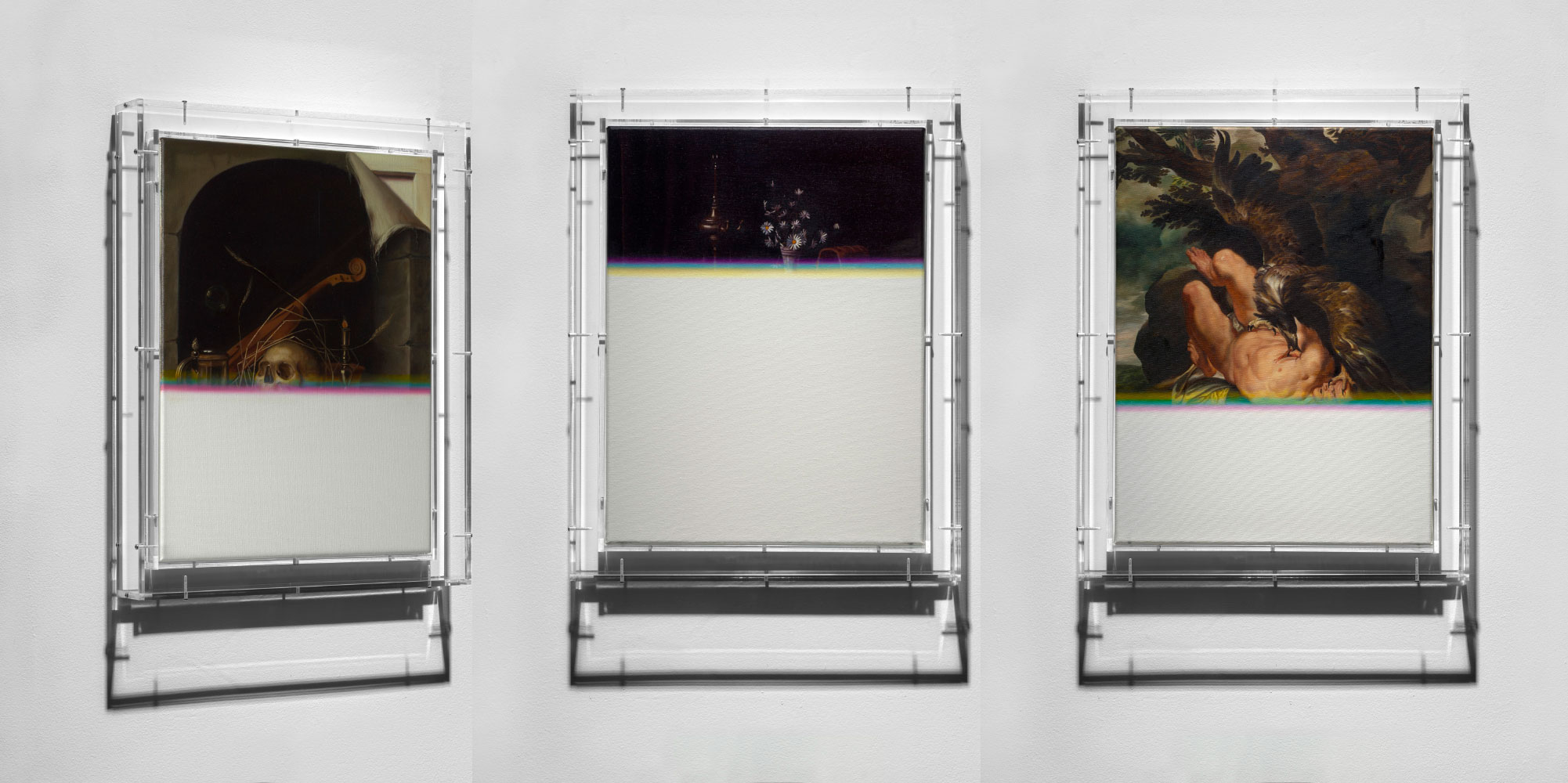
Center: Mat Collishaw, Expiration Painting, Spray, 2016, Oil on canvas, wood, Perspex, 47,3 x 37,3 x 5,3 cm, © Mat Collishaw, Courtesy of the Artist and Gary Tatintsian Gallery
Right: Mat Collishaw, Expiration Painting, Talons, 2016, Oil on canvas, wood, Perspex, 47,3 x 37,3 x 5,3 cm, © Mat Collishaw, Courtesy of the Artist and Gary Tatintsian Gallery
